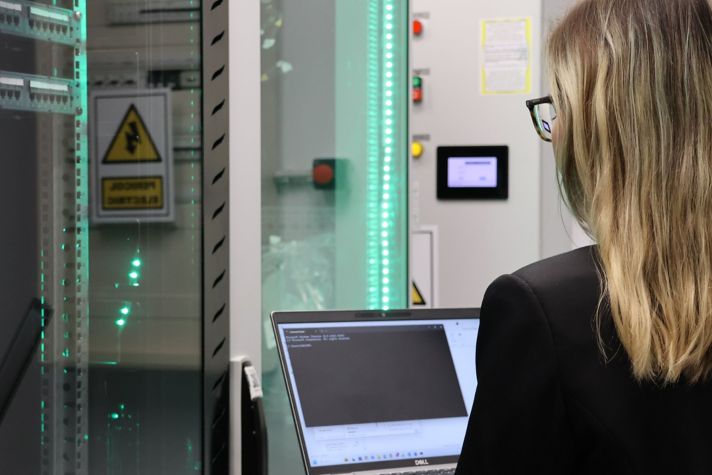-
Global
-
Africa
-
Asia Pacific
-
Europe
-
Latin America
-
Middle East
-
North America
- |
- BUSINESSES
- |
- Contact
- |
-
Global
-
Africa
-
Asia Pacific
-
Europe
-
Latin America
-
Middle East
-
North America
- |
- BUSINESSES
- |
- Contact
- |
You are browsing the product catalog for
You are viewing the overview and resources for
- News
- How Artificial Intelligence Keeps This Oil Company Running
How Artificial Intelligence Keeps This Oil Company Running
The secret lies in the data.
Three million barrels of oil a day are produced by the Abu Dhabi National Oil Company (ADNOC.)
That’s equivalent to 126 million U.S. gallons.
To refine that crude oil into petroleum, operations must be as efficient as possible. Refineries need to avoid the biggest culprit that can cause everything to go down: Unexpected maintenance.
For example, if a critical compressor breaks – and the refinery must pause production while it is repaired – that hurts the bottom line.
“It costs millions of dollars if ADNOC loses even one day of production,” said Honeywell principal application engineer Meenakshi Krishnaswamy.
Here’s how we’re working with ADNOC to deploy and maintain artificial intelligence (AI) models to drive greater efficiencies across ADNOC's Upstream and Downstream operations.
Leverage digital twin technology
A digital twin is a digital replication of a physical asset and process.
This copy gives insight into asset performance or foresight of a potentially negative event, such as equipment breaking.
We work with ADNOC to build and deliver AI-driven digital twin models, deploying them across thousands of critical assets.
That builds on our expertise. “We are able to combine process knowledge, maintenance knowledge, rotating machinery knowledge and the tools and technology that we have, for a scalable analytics solution,” Meenakshi said.
Analyze data with software
It’s all in the data — the Honeywell Forge software collects data securely and processes it via analytics defined in the AI model library.
Through this partnership with ADNOC, we are working on developing prescriptive recommendations, including optimal time to maintain the asset and various key performance indicators (KPIs) to monitor and continuously improve operations.
For example, instead of doing required maintenance every two weeks – whether the equipment actually needs work or not – the insights can project exactly when maintenance is necessary.
"As part of ADNOC's 2030 and innovation strategy, we are continuously driving innovation and focusing on deploying new emerging and advanced technologies that can enhance operational efficiencies and optimize performance,” said Khaled Al Blooshi, Vice President, Digital Projects & Innovation at ADNOC.
“The predictive maintenance project we are working on with Honeywell is one of the largest in the oil and gas industry. The project is significant in its application of AI technology and enables us to maximize operational efficiencies through reduced unplanned maintenance, and increased reliability, uptime and safety.”
Continuous optimization
Real-time recommendations help decision makers determine how to best apply resources.
The KPI reporting and ability to learn from observations helps to continuously optimize AI models to each site, Meenakshi said.
Ultimately, AI provides short-term benefits such as improved overall equipment effectiveness and reduced maintenance costs.
It also provides long-term benefits such as growing a knowledge base and maintaining savings.
Copyright © 2025 Honeywell International Inc.




